The desert of Southern Utah offers some of America's most iconic scenery for adventurers in the west. The five national parks, or the Mighty Five, provide many choices and locations for people to enjoy this fascinating landscape. Over the years their popularity has skyrocketed, and that has made it tough to find the peace and solitude many of us seek while enjoying nature. Fortunately for us the desert is vast and mostly undeveloped, giving us far more opportunities to recreate outside of the parks than in them. Many of these trails are on BLM land, which means I can bring my dogs, avoid the crowds and often not have to pay to enjoy it. Sure you might have trouble finding a bathroom facility or sometimes even paved roads, but these are the things that make it so much more interesting, right? Without further ado, here are my 15 favorite adventures in southern Utah that are not in national or state parks.
Southwest

Candy Cliffs of Yant Flat. Photo by Kyle Jenkins.
This region is home to Zion NP, Bryce Canyon NP and Snow Canyon State Park. The bustling city of St. George is the main hub, and it is located only 90 minutes north of Las Vegas and 45 minutes from Zion. This is the most developed part of southern Utah, but it still has many great options away from the crowds and is sparsely populated outside of St. George and Cedar City.
Candy Cliffs of Yant Flat: This unusual and largely unknown area is a great example of what can be found in Utah when you are willing to get onto a dirt road. A short trail takes you to a giant open territory that rivals any state-run location. A truly unique place and a hidden gem of the desert. The road is not recommended after heavy rains, but those are rare.
Chuckwalla Trail to Scout Cave - This trailhead starts in the northern suburbs of St. George and takes you to a decently sized cave and along a ridge overlooking golf courses and part of Snow Canyon. This trail is connected to a massive system called the Red Cliffs Desert Reserve, and it offers many options besides this one trail. It is not remote, but it is free and not overly crowded.
Red Cliffs Trail: The flagship trail of the Red Cliffs Desert Reserve is located near the town of Leeds just off of I-15 outside of St. George. Experience the soaring red rock cliffs, waterfalls, nearby camping and historical trails this area has to offer. This hike does have a $5 day use fee and get can a little crowded, but it is a very easy way to see some pretty great desert scenery.
Kanarra Creek Trail: This trail is getting very popular, so I hesitate to add it to this list. It is simply too beautiful and unique to leave it off, however, especially since it's still much less traveled than the parks. Slot canyons with red rock waterfalls await between giant valley walls. It is located very close to the freeway, and it makes a great stop while driving the I-15.
South Central

Reflection Canyon at night. Photo by Kyle Jenkins.
The least developed of the three regions, this area is dominated by the massive BLM-run Grand Staircase Escalante National Monument. It is federally run and only lightly developed, and it is considered one of the most wild yet accessible areas in Utah. Capitol Reef National Park, Goblin Valley State Park and Lake Powell are some of the common destinations here.
Little Wild Horse Canyon: This is a relatively popular trail for out-of-the-way desert hikes because of the ease of access to a variety of slot canyons. Located near Goblin Valley, the hike is one of the local favorites in the San Rafael Swell. Here you get slot canyons without having to do anything technical, you just hike though many perfectly spaced formations. You won't get the solitude here like some other places but it is awesome here!
Reflection Canyon: This difficult 20-mile round-trip backpacking trip takes you to a remote corner of Lake Powell with particularly stunning scenery. Located at the far end of Hole in the Rock Road, it is a journey just to get to the unmarked trailhead. There is nothing easy about this hike, but the reward is definitely worth it. This one takes some planning, and do not attempt on hot summer days.
Lower Calf Creek Falls: A beautiful and large waterfall awaits those who head down to the Grand Staircase. An easy hike with an easy to find trailhead make this hike is a must for anyone looking for a place to cool off in the desert. There is a $5 day use fee, but feel free to bring the pups!
Zebra Canyon and Tunnel Slot: One of the coolest geological features found on the Colorado Plateau are slot canyons, and there are some great ones in south central Utah. The hike is 8.5 miles round trip, but these slot canyons are as good as you will find. The trailhead is only 8 miles down Hole in the Rock Road, making it a popular destination for locals.
Coyote Gulch: This long backpacking trail can be difficult at times, but it is hard to imagine a more visually appealing desert hike. Massive arches with varnished cliff faces, small waterfalls and large vistas make this trek worth the difficulty for seasoned hikers. There is a great variety of terrain and fewer people then you would expect at such a stunning place.
Peek A Boo Slot and Spooky Gulch: One of the great things about Coyote Gulch is that you can visit some of its best parts without the super long hike. The 3-mile loop takes you to some of the slimmest passable slot canyons in Utah and many other great sights without having to commit to the full backpacking trip.
Southeast

Corona Arch beneath the stars. Photo by Kyle Jenkins.
When people think of the arches that make Utah so memorable, they are usually thinking about the southeast region. Arches National Park and the surrounding area has the highest concentration of natural arches and bridges on the planet. These arches can be found en masse outside of the park's borders as well as inside of them. In addition to the natural wonders, there are a high number of native ruins and remnants. Canyonlands National Park, Natural Bridges National Monument, and the city of Moab make southeast Utah one of the great outdoor hubs of the American West.
Corona Arch: The largest arch in Utah not located in the nearby national park, Corona is nothing short of breathtaking. The relatively easy hike starts across from the Colorado River and takes you to two arches located within a few dozen yards from each other. They are huge and very accessible, and you don't need to fight for elbow room. It is one of my favorite hikes in the entire state.
Natural Bridges Loop: If you want remote, there is no place more-so than Natural Bridges National Monument. In fact the Dark Sky Project considers this area to have the darkest skies in the lower 48. The low amount of light pollution reveals how far off the beaten path these three massive natural bridges are. Plan your trip during a New Moon to experience the Milky Way like you have never seen before. The natural bridges are some of the largest you will see and are worth the long road trip.
Mule Canyon - Home of the iconic native ruin known as "House on Fire," this Cedar Mesa Trail is a prime example of indigenous ingenuity. Still holding up after roughly 700 years, the granary sits below an interesting rock formation for which the site is named. The hike is easy and flat, and there are many other granaries tucked into the cliffside. Cedar Mesa is about an hour and a half from Moab and is loaded with many native ruins, but it has almost no development.
Fry Canyon: An easy access canyoneering experience for anyone willing to head into the remote territory of Cedar Mesa. Fry Canyon offers its visitors refreshing pools along the trail, native ruins tucked into cliff walls, and a low number of people to get in the way. Dogs are prohibited, and canyoneering equipment and skills are required.
Road Canyon: The beautiful ruin known as "Fallen Roof" is another example of the unique things you can't see and won't see when you stick to the well-traveled road. Red cliffs with ancient granaries tucked underneath add a sense of mystery to your southern Utah journey. If having the trail to yourself is high on the priority list, then you will really enjoy Road Canyon.
Plan Well and Stay Safe
Keep in mind when traveling to remote areas that you need to do a little more planning, bring a little more gear, and have a backup plan. Let people know where you are going and when you should be back. Many of these places have no cell phone reception and are very far from medical facilities. Bring your first aid kits and extra provisions. All slot canyons have serious flash flood risks, and you need to know what's going on with the weather in the vicinity and in the surrounding area as well. Make sure the car you drive is capable of driving on the roads you want to go on.


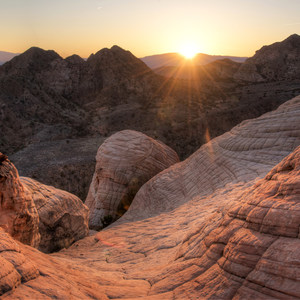
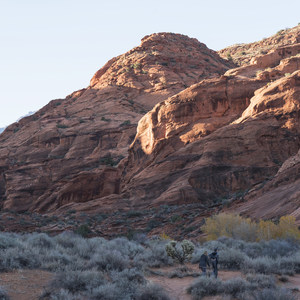
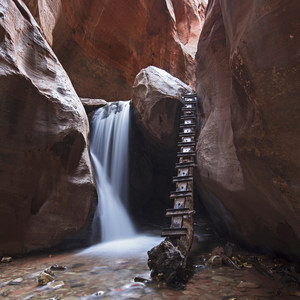

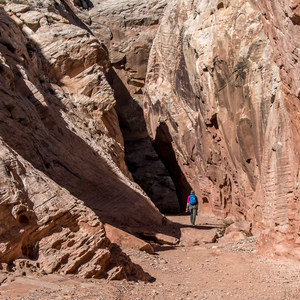
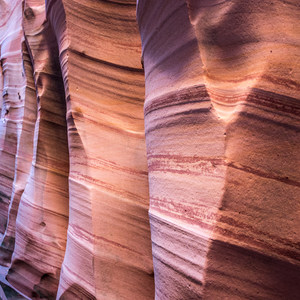
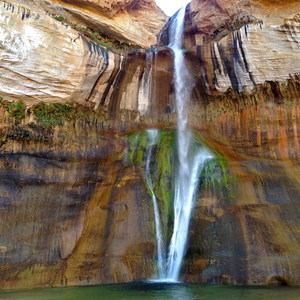
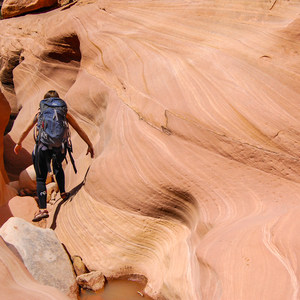



Comments
Sign In and share them.